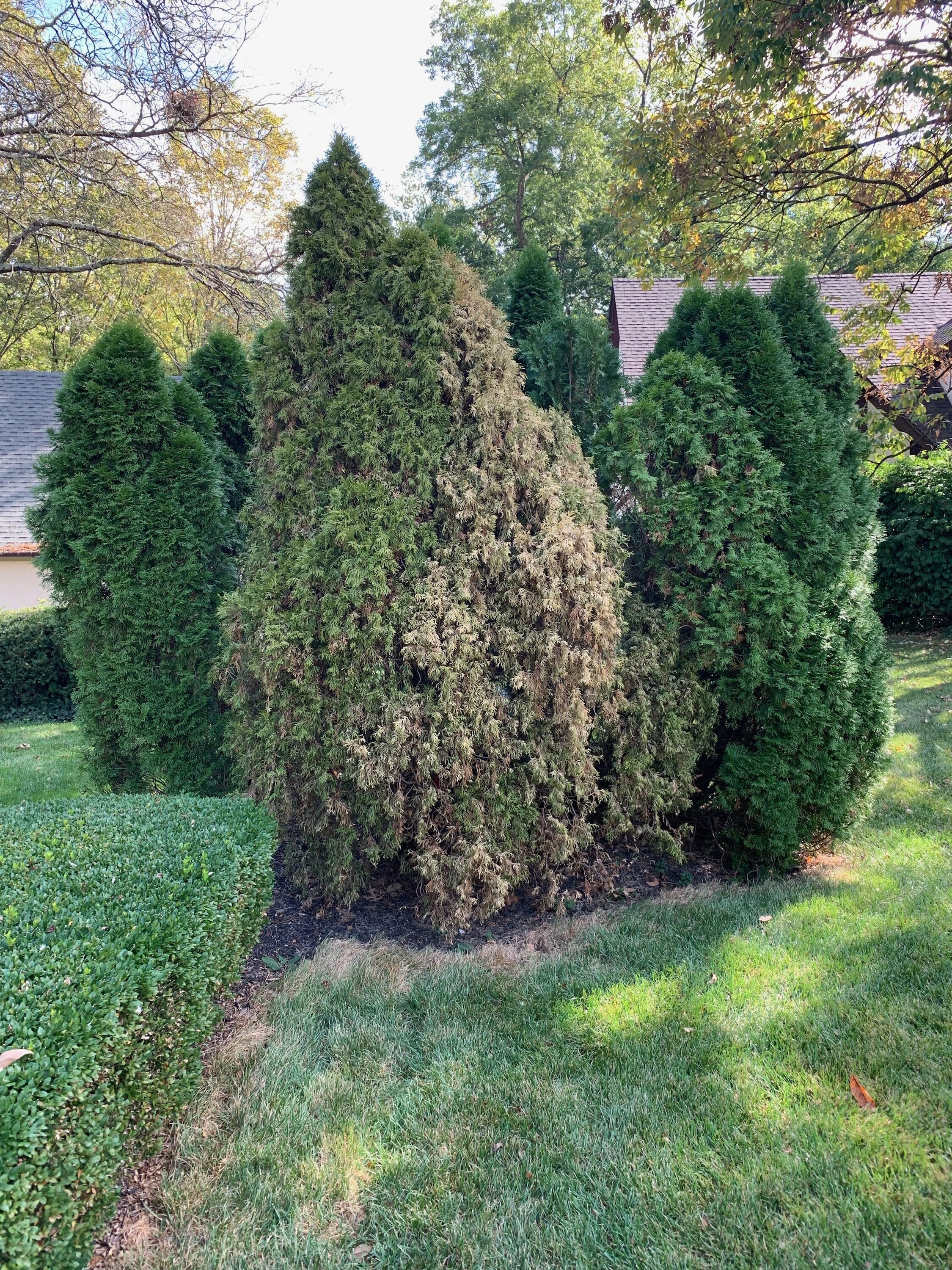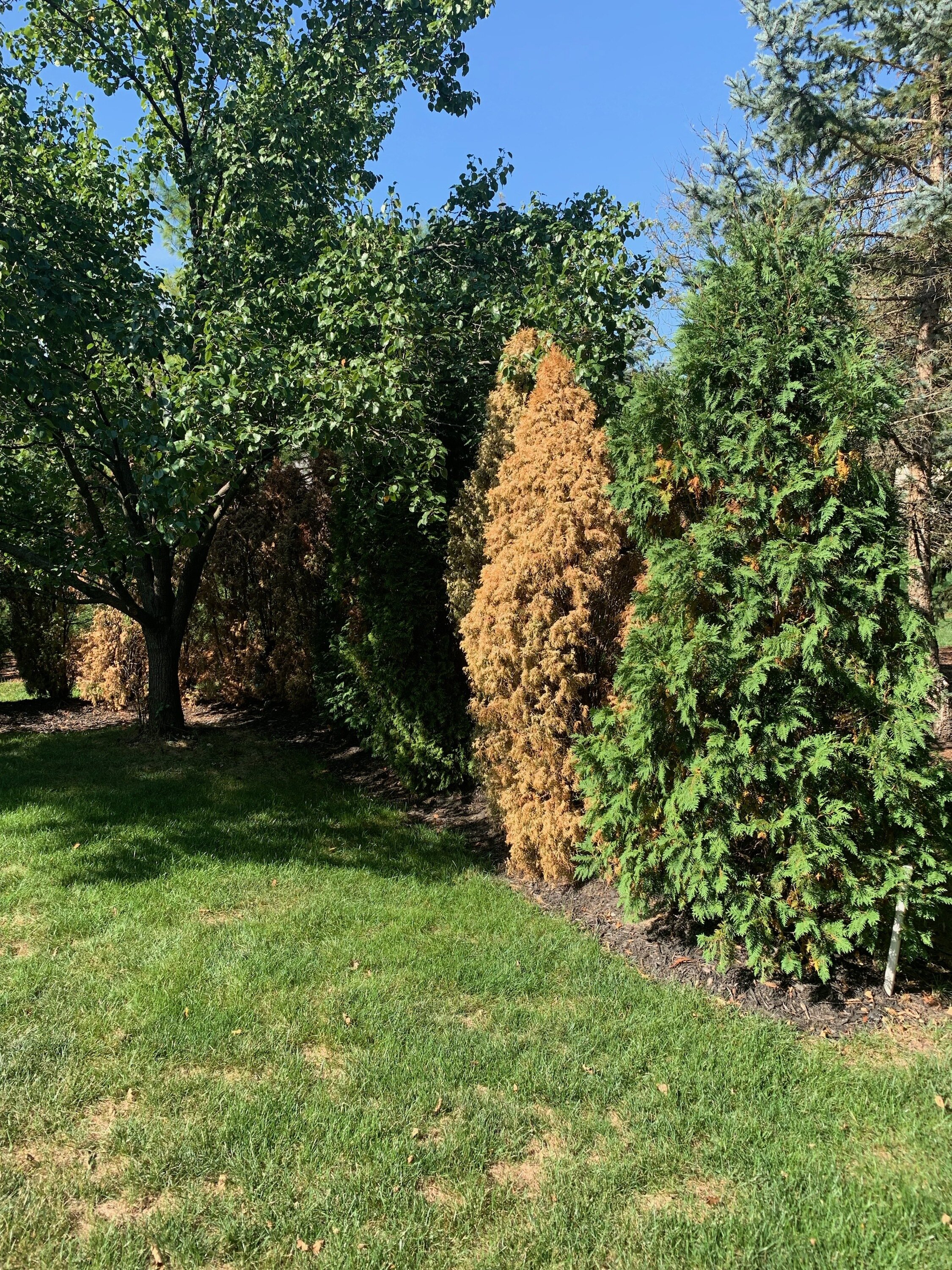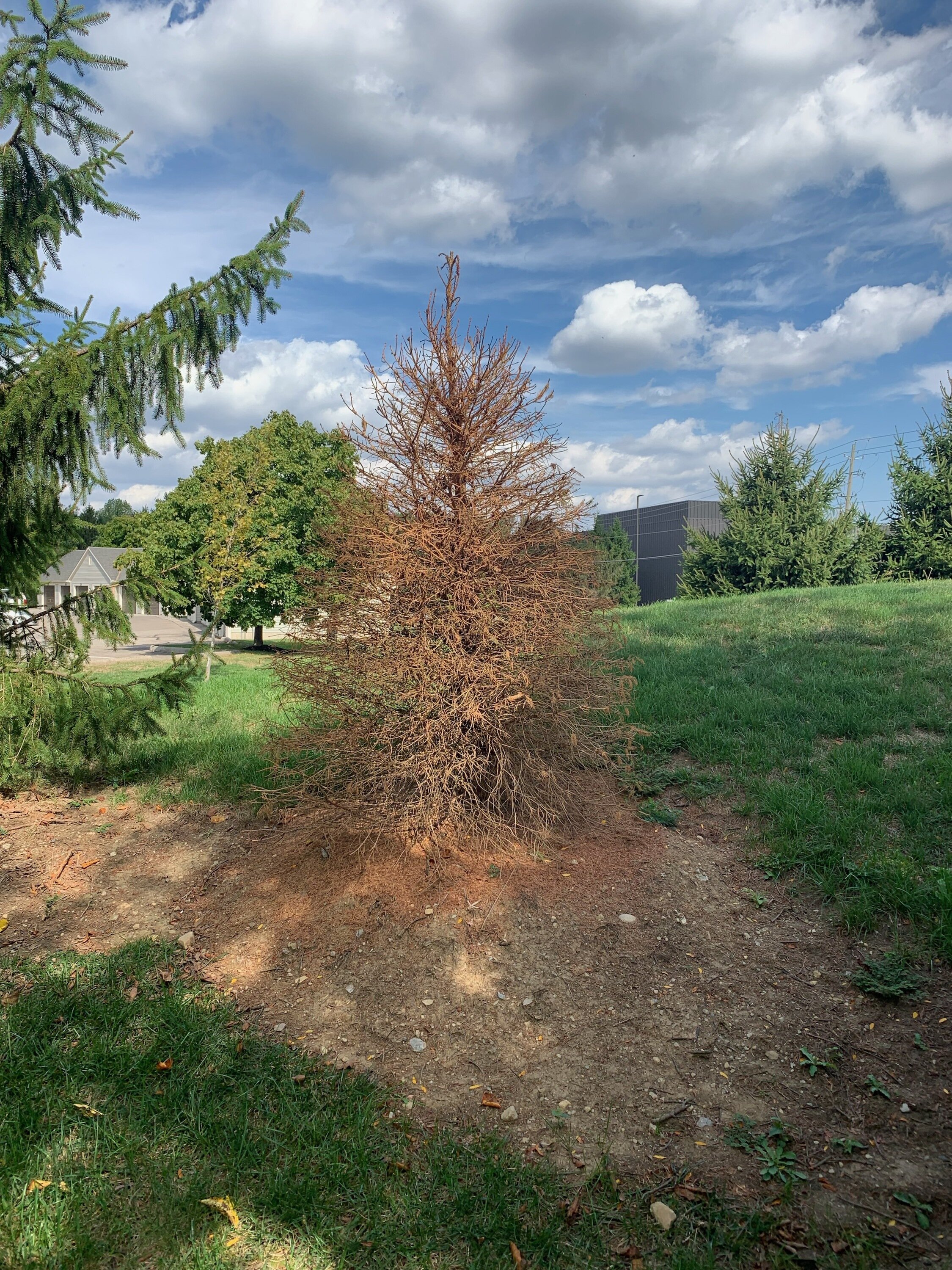Drought Stress!
By José Fernández
The passing of time seems so fast that it can skew our perception of the present. In central Ohio, most non-farmers are still thinking about the record amount of rain fall we experienced this spring, so much so that we didn’t really pay attention when the wet spring turned into a dry, dry, summer and fall.
I drive around large parts of town, regularly covering over 100 miles of road per day, and trees are what I notice, whether in my clients’ yards or not. And what I started to notice around August was an increasing number of dead trees. The trend started with maples: entire brown trees that looked like they had succumbed to verticillium wilt (you can read about that disease in a previous article).
Soon after, my colleagues and I started commenting on dead oak trees popping up here and there. Trees that just turned brown and died.
Now, White Pine and Arborvitae, particularly the Emerald Green variety. And this last one is what pushed me to sit down and write about the season of drought we are going through.
In the last 3 weeks, more and more clients have been calling in concerning their dead/dying Arborvitae. Almost every case looks just the same, and the loss has almost exclusively been to the Emerald Green variety. Apparently this variety is more susceptible to drought stress than others in the Thuja genus.
Things came to a head last week: Within a span of three days, four separate clients contacted me concerning their dead or dying arborvitae. In each case nothing turns up except very dry soil conditions. I explained to one client how the drought is affecting trees. Immediately after I spoke, we walked past his neighbor’s front lawn and there was a mature Norway Maple with maybe 20% of the canopy remaining. All other parts of the tree had wilted. The tree will need to be removed.
Trees are able to change how they interact with the environment to preserve their health. In times of drought they can limit gaseous exchange with the air by closing openings in the bark and leaves to preserve moisture loss. Of course, even though less moisture is being lost to the air, during a drought less and less moisture is coming in, and eventually the tree runs out of internal reserves. Like most of us, trees can go on for quite some time with no real exchange with the surrounding environment, but only for as long as our reserves allow. Eventually we die of starvation or become vulnerable to a pathogen long before the point of starvation comes in.
In the case of White Pine and other conifers, drought makes the tree vulnerable to conifer bark beetle, and in fact, a drought stressed tree may even emit pheromones or other chemical signals that attract these beetles in great numbers. The struggling tree is blanketed by thousands of small boring beetles that disrupt the vascular system. Result: the tree is dead in a matter of hours. Best way to avoid conifer bark beetle? Not an insecticide spray. Not a systemic application. Not fertilization. In a word: water.
Avoid drought stress = avoid a pest that delivers the killing stroke to a weakened tree.
What about lawn irrigation? I find that relying on lawn irrigation typically does not provide enough water to do more than supplement the water the tree is getting from normal rain fall. Once soil water levels are depleted lawn irrigation would need to be more than sufficient for grass in order to make a difference for struggling trees. If a tree is in full health, with plenty of reserves and a large area for root development in non-compacted soils, lawn irrigation will make the difference. If the tree is already stressed for some other reason, is trying to make it by in compacted urban soils, and is now facing drought conditions, expect the tree to decline and die rather rapidly.
Watering trees as they go into the dormant season is normally very helpful. As temperatures cool down and leaves drop, soil moisture usually remains at a good level, but should still be monitored to make sure trees are not headed into winter suffering drought stress. In a year where there has been an extended drought this is especially important. Not everyone will realize that their trees were stressed this year by the drought. Because of this, I expect to be looking at even more dead trees next spring – trees that will either not leaf back out, or trees that will leaf out, look good for 1-2 weeks, then suddenly turn brown and die. I know that sounds pessimistic, but I have seen it before.
The last two rain fall periods at my house in Union County provided .10 inches of rain, and .37 inches of rain, respectively, about 1 week apart. This is helpful, and I am thankful for it, especially in conjunction with cooler temperatures. Prior to that, we had only had one rainfall event, and that was 6 weeks before! And before then I recall weeks of no rain. Because of this, I have been watering my trees, and will do so into the fall. I am hoping for several days of soft gentle rains to try to build moisture levels back up in the soil.
Last paragraph, and it’s a short one: After reading this, go out to your trees. Kneel down, stick your hand under the mulch, if there is any. Scuff up the soil and feel it. Trust me, you will know what to do after that. Get your hose out and give your tree a drink. Repeat the process in a couple of days.
Some photos of what I’ve been seeing:





Update 10/23/19: Below is a video captured by Chris Gill (Regional Manager, Russell Tree Experts) of dozens of arborvitae that have died as a result of drought stress:
José Fernández | Regional Manager, Russell Tree Experts
José became an ISA Certified Arborist® in 2004, and a Board-Certified Master Arborist® in 2015. Currently he is enrolled at The Ohio State University pursuing a Master’s Degree in Plant Health Management. José likes working around trees because he is still filled with wonder every time he walks in the woods. José has worked at Russell Tree Experts since 2012.


